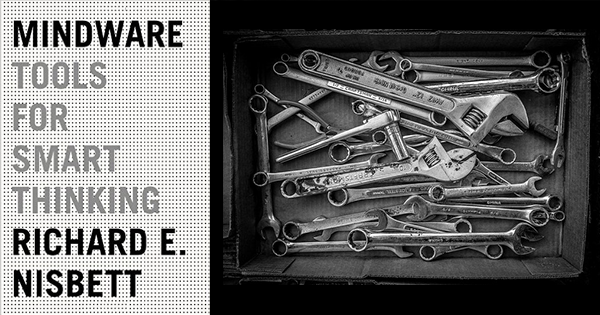
As long as people continue to make bad choices, there will be books about how we can make better ones. Richard E. Nisbett’s new book, Mindware: Tools for Smart Thinking, corrals major ideas from a dozen fields into a single mental fitness routine that dives into concepts like decision theory, conditional logic, and dialectical reasoning.
Nisbett, a psychologist with more than half a century of experience, devotes a significant number of pages to the workings of the unconscious mind. The unconscious has a bad reputation, he says, for being “the repository of repressed thoughts about violence and sex and other things best left unmentioned,” although the conscious mind is heavily preoccupied with unmentionables, too. Frequently left out of the picture is the role that unconscious thinking plays in creative discoveries—like the subject of a poem or the twin prime conjecture—or in less earth-shattering decisions that we make every day, as this excerpt shows.
Part of the reason conscious consideration of choices can lead us astray is that it tends to focus exclusively on features that can be verbally described. And typically those are only some of the most important features of objects. The unconscious considers what can’t be verbalized as well as what can, and as a result makes better choices.
If you cut the conscious mind out of the process of choosing, you can sometimes get better results. In a study supporting this conclusion, Dutch investigators asked students to pick the best of four apartments. Each apartment had some attractive features (“very nice area of town”) and some unattractive features (“unfriendly landlord”). One apartment was objectively superior to the others because it had eight positive, four negative, and three neutral features—a better mix than the others. Some participants had to make their choice immediately, with little time to think about the choice either consciously or nonconsciously. Other participants were asked to think carefully about their choice for three minutes and review all the information as best they could. These participants had plenty of time for conscious consideration of the choice. A third group saw the same information as the others, but participants weren’t able to process it consciously because they had to work on a very difficult task for the three-minute period. If they were processing the information about the apartments, they were doing so without awareness.
Remarkably, participants in this last, distracted group working on the difficult task were almost a third more likely to pick the right apartment than the group allowed plenty of time for conscious thought. Moreover, the latter group failed to make better choices than the group given scarcely any time to think.
Excerpted from Mindware by Richard E. Nisbett, published in August 2015 by Farrar, Straus and Giroux, LLC. Copyright © 2015 by Richard E. Nisbett. All rights reserved.

